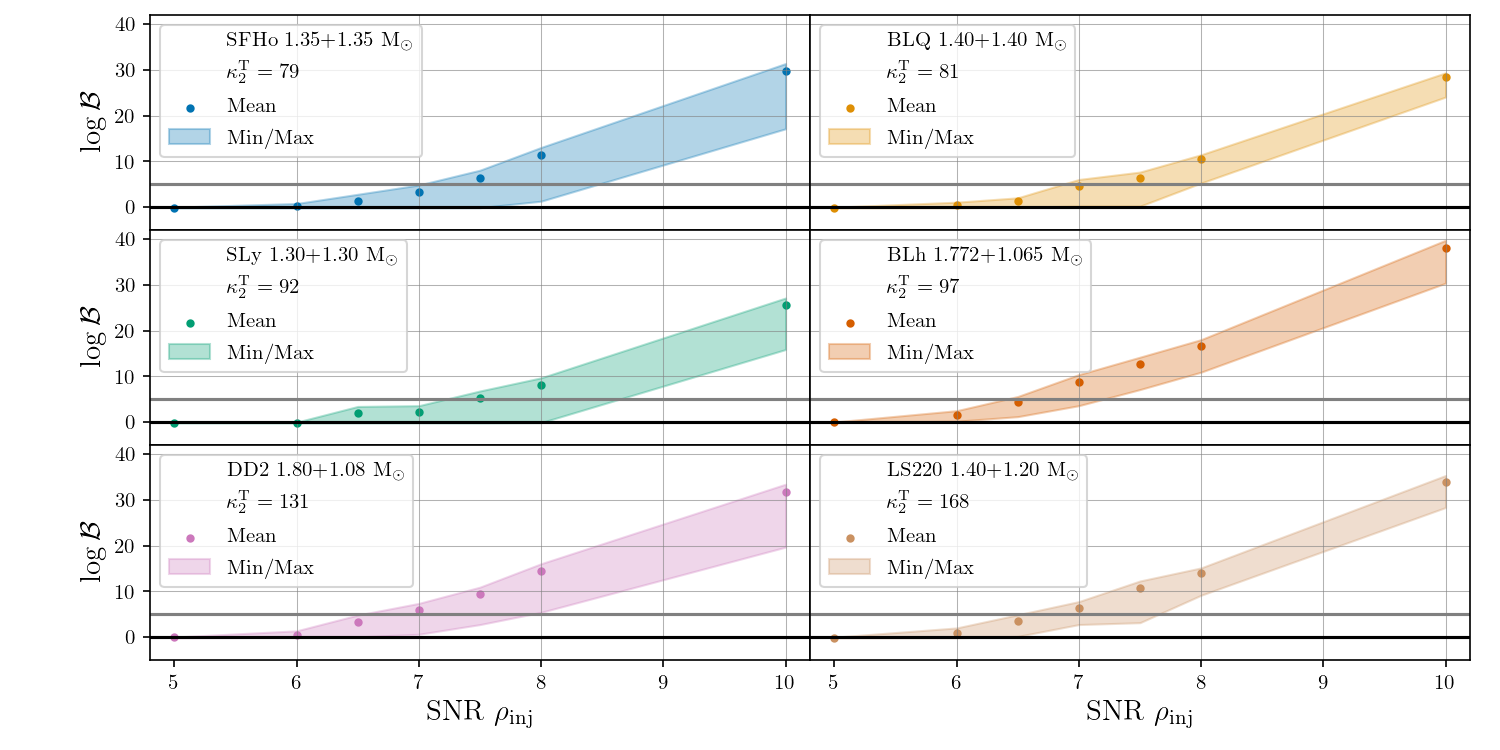Kilohertz gravitational waves from binary neutron star mergers: Inference of postmerger signals with the Einstein Telescope
Matteo Breschi, Sebastiano Bernuzzi, Kabir Chakravarti, Alessandro Camilletti, Aviral Prakash, Albino Perego
Preprint on arxiv:2205.09979 [gr-qc]
Published:
Next-generation detectors are expected to be sensitive to postmerger signals from binary neutron star coalescences and thus to directly probe the remnant dynamics. We investigate the scientific potential of postmerger detections with the Einstein Telescope using full Bayesian analyses with the state-of-the-art waveform model NRPMw. We find that: (i) Postmerger signals with signal-to-noise ratio (SNR) ∼7 can be confidently detected with a Bayes’ factor of logB≃5 (e-folded) and the posterior distributions report informative measurements already at SNR ∼6 for some noise realizations. (ii) The postmerger peak frequency f2 can be confidently identified at SNR 7 with errors of O(1 kHz), that decrease below O(100 Hz) for SNR 10. (iii) The remnant’s time of collapse to black hole can be constrained to O(20 ms) at SNR 10. However, the inference can be biased by noise fluctuationsif the latter exceed the signal’s amplitude before collapse. (iv) Violations of the EOS-insentive relations for f2 can be detected at SNR ≳8 if the frequency shifts are ≳500 Hz; they can be smoking guns for EOS softening effects at extreme densities. However, the f2 measurement can be significantly biased by subdominant frequency components for short-lived remnants. In these cases, an EOS softening might be better inferred from the remnant’s earlier collapse.

